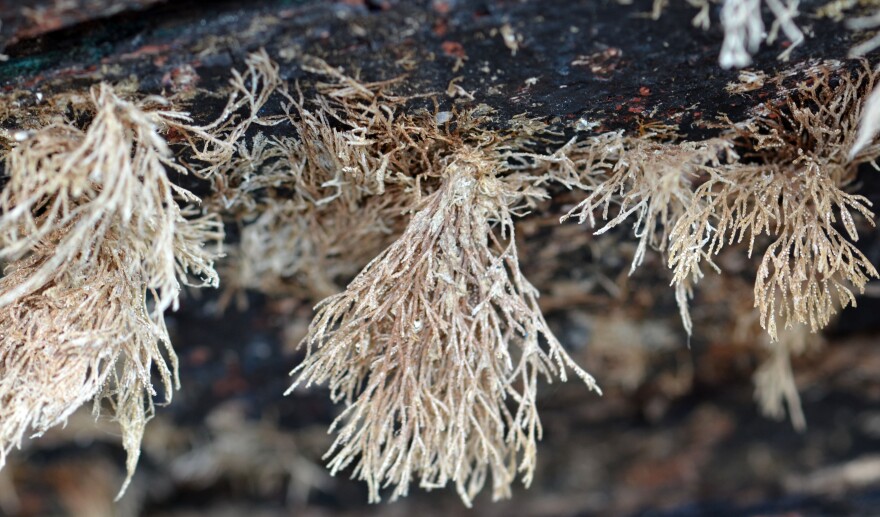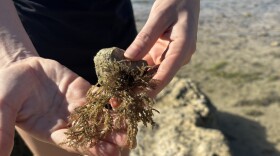The number one vector for invasive species coming to Hawaii is not well regulated. Hawaii is not unique in the lack of regulation concerning biofouling, which is the transfer of organic marine life on the underside of ship hulls. Much more attention is given to the agricultural products being transported on board those ships.
The State of Hawaii already spends millions of dollars every year dealing with the impacts from invasive species. Most of the money is spent on containment and remediation after an alien species has established itself.
But the focus is now shifting to preventing invasives from getting a foothold in the first place.
Jonathan Ho with the Hawaii Department of Agriculture says that every plant, animal, or soil culture is pre-classified into a risk category. Permits to import restricted species are granted based on the risk factor and the intended use. Any plant or animal that hasn’t been categorized is automatically held for evaluation.
One of the most popular imported items are Christmas trees. Making sure those trees come in clean takes cooperation between the States of Hawaii, Washington, and Oregon. The Pacific Northwest supplies all of Hawaii's imported Christmas trees, and in the past there have been serious issues with invasives. But a joint agreement between the states has led to signifcant reduction in the incidence of unplanned pests hitching a ride on the evergreen trees. Tree growers have even signed on.
Regulators successfully catch many invasives before they arrive, but they’re constantly having to adapt. Christy Martin, who does outreach on alien species control for the University of Hawaii, said that constantly evolving trade flows and changing climate are creating new paths for invasive plants and animals to travel. Many are not always apparent to regulators.
One of those little explored pathways is happening aboard shipping vessels. Specifically the underwater hulls of those vessels. Organic marine life often hitches a ride on a ship's hull, a process called biofouling.
Hawaii receives around one thousand incoming ocean vessels each year, so biofouling is a major concern for invasive species experts. In fact, according the state Department of Land and Natural Resources ships are the main source for invasives coming to Hawaii.
Shipping vessels can bring entire ecosystems with them. Tangles of kelp, hulls covered in barnacles, and ballast tanks filled with microscopic waterborne creatures. Procedures are currently in place to manage ballast water discharge, but little regulation exists to deal with biofouling.
Hawaii is not alone in the lack of biofouling regulation. Most states and the federal government do not have strict guidelines for inspection or cleanup. Addressing biofouling will be particularly challenging because the inspection process is slow and resource intensive, often requiring SCUBA divers, underwater drones, or putting a ship in dry dock.
The lack of regulation may be why biofouling is the top vector for incoming invasive species.



